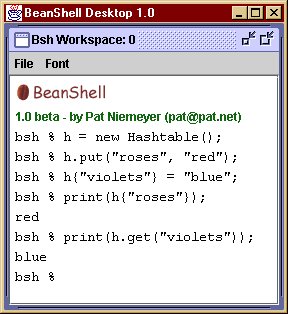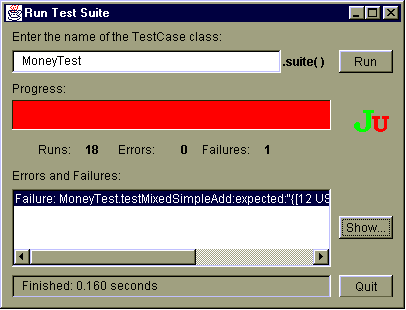Xtreme testing for Delphi programs
A standard testing framework for Delphi has been long overdue. Now there is one and it's even open source.
In my article on Xtreme testing, I talked about how it could improve the quality of programs as well as the speed and confidence with which they were developed. For the examples, I used Kent Beck and Erich Gamma's JUnit open-source testing framework and I wrote the program fragments using Java -- a language I'm comfortable with. But those who know me from previous writing gigs or my once-frequent postings in online forums know that I've long been a Borland Pascal programmer. My online buddies are probably wondering why I didn't write the examples in Object Pascal. The reason is that I discovered Xtreme testing only recently, and, as far as I know, there are no testing frameworks available for Delphi.
But we're about to change that.
I've been choosing the latest version of Borland's Pascal as the best solution to most of my programming needs for 15 years now. The reasons are varied. The tool's suitability to the kind of applications I've been developing is one reason. Its overall quality is another. Not to mention its blazing instant-feedback speed. A large reason has been the community of developers that has gathered around the tool.
I met that community when I joined CompuServe and the BPASCAL forum back in 1993. BPASCAL quickly became an invaluable asset. The forum was filled with excellent questions, prompt answers, expert advice, and loads of useful source code. Examples, workarounds, patches, libraries, frameworks, and even complete applications were available for download and free use. The forum's motto was "Don't pay back -- pay forward," and these guys took it seriously. I started contributing advice and source code as soon as I was confident enough to do so, and eventually became expert enough to start writing about Delphi for trade publications -- but that's another story.
Even after all these years I have never felt that I had managed to fully pay back -- er, forward -- all the help. That's the reason for this contribution: DUnit, a port of the JUnit Xtreme testing framework to Delphi.
Porting from JUnit
The original JUnit framework is extremely easy to use and very effective. I wanted the Delphi port to be as good.
To speed up the port, I decided to translate the classes and interfaces in JUnit almost literally. It was a compromise that required heavy use of method overloading, which means that DUnit won't be usable with versions of Delphi prior to version 4.
I made another compromise. I could translate the methods in JUnit almost literally if I used the Delphi port of the Java collections library that I had begun implementing, so that's exactly what I did.
These two decisions let me do the port in a single afternoon and resulted in a framework that I find very easy to use. But the implementation relies heavily on interfaces and iterators -- idioms seldom used by Delphi programmers. Although the first idiom is fully supported by Delphi, most programmers reserve it for dealing with COM and ActiveX objects. Interfaces provide the advantage of memory management by reference counting, so a little work up-front with interfaces translates into much less code to write. You do have to be careful with some interface implementation issues. For example, a loop with references to interfaces will make it impossible for Delphi to reclaim the memory used.
The second idiom is common in Java and C++ programs, but may be unfamiliar to Delphi programmers. Iterators enable you to write implementation-independent loops that process the objects contained in a collection. JUnit uses iterators, so DUnit does too.
Classes that test classes
To apply DUnit to your Delphi programs, you write a descendant of the class TTestCase for each test case you want to apply to a unit. I decided to apply DUnit to the collections library used in its own implementation. To avoid circular unit references, I had to declare the test case classes in the main program (DPR) file, but I recommend that in general you place the test classes inside the units they test. Doing so will let you test protected and private methods in addition to the public and published ones.
This is the class declaration for a simple test case:
typeThe first two methods test several conditions on arrays and linked lists. The third procedure is a utility used by the preceding routines. The last two methods generate a test failure and an exception respectively, to make sure DUnit responds properly when errors are detected. The test methods must be declared within a published section so that Delphi generates runtime type information for them and DUnit has access to method names at runtime. Here's part of the implementation of doEmptyTests:
TListTests = class(TTestCase, ITest)
published
// published, so we get RTTI;
// virtual, so the compiler
// doesn't eliminate them;
procedure testEmptyArrayList; virtual;
procedure testEmptyLinkedList; virtual;
procedure doEmptyTests(list :IList);
procedure testFailure; virtual;
procedure testError; virtual;
end;
procedure TListTests.doEmptyTests(list: IList);
var
i :IIterator;
begin
assert('isEmpty', list.isEmpty);
assertEquals('size', 0, list.size);
assert('iterator at end', not list.iterator.hasNext);
list.add('anItem');
assertEquals('size', 1, list.size);
//...
Yes, writing the test cases is that easy. Each line in the test method checks (asserts) a condition that should be true if the tested code is working properly. DUnit provides several different assertXXX methods to make writing tests easier.
Pulling it all together
To assemble all the test methods into a single test suite, you write a function like this:
function suite :ITestSuite;
begin
result := TTestSuite.Create;
result.addTest(TListTests.Create('testEmptyArrayList'));
result.addTest(TListTests.Create('testEmptyLinkedList'));
result.addTest(TListTests.Create('testFailure'));
result.addTest(TListTests.Create('testError'));
end;
Finally, you run the tests in console mode with a single statement in the main program block:
begin
DUnit.runTest(suite, true);
end.
Oops! Two bugs in the collections library surfaced while I was executing the tests. So the framework has already paid for the effort I invested in it. After fixing the bugs and running the tests again, the output looks exactly as expected:
DUnit: Testing.
...F.E
Time: 0.0
FAILURES!!!
Test Results:
Run: 4 Failures: 1 Errors: 1
There was 1 error:
1) TListTests.testError: EAbort: Raised exception on purpose
There was 1 failure:
1) TListTests.testFailure: AssertionFailedError: Failed on purpose
Press [return] to continue.
A license to test
What are the licensing terms for DUnit? In open source development, when you enhance, fix or port someone else's code, it is customary to:
- Give as many rights to the original software as the original authors did.
- Give the same rights to your contributions (some licenses, such as the GNU GPL, require that you to do this).
- Give credit to the original authors for their work.
- Preserve all disclaimers made by the original authors, in particular those about lack of warranty and protection from their names being used for promotion without authorization.
The license to the original JUnit is very flexible, so I made the license to DUnit almost an exact copy of it. The part about your rights reads like this:
Permission to reproduce and create derivative works from the Software ("Software Derivative Works") is hereby granted to you under the copyrights of [...] (THE AUTHORS). The authors also grant you the right to distribute the Software and Software Derivative Works.
Next steps
As it stands, DUnit lacks any documentation. If you can read Java code, then the documentation that comes with JUnit is probably sufficient.
At this time the following still needs to be done:
- Create a GUI interface to the framework like the one JUnit has. Given Delphi's GUI capabilities, this shouldn't take more than an hour or so.
- Use Delphi's RTTI to build a test suite automatically by gathering all the methods with names that start with "test." JUnit does this, and the feature is very useful. I'll leave this task to someone else.
- Translate JUnit's excellent documentation and examples to Delphi.
If you'd like to contribute to the DUnit project, please do so. But try to refrain from sending me suggestions. What I think should be done in DUnit I will likely do, time permitting. As Linus Torvald says, I'd rather you "show me the source code!"
Oh -- the source code! You can download the source code to the latest version of DUnit from my always-under-construction Web site: http://www.suigeneris.org/dunit. I hope you find this small testing framework useful. If you do, please forget about expressing thanks. Pay forward.
Originally written for In Publishing LLC
Copyright © 1999 Inprise Corp.

 BeanShell 1.0
BeanShell 1.0  The language interpreted by BeanShell is very similar to JavaScript. There's no need to declare variables or parameter types; the tool does type checking at runtime. Any class, object, or method available to the Java interpreter can be accessed from within BeanShell using standard Java syntax. The interpreter understands Java import statements, and it provides a convenient syntax for accessing Java Bean properties. External commands can be invoked from within the interpreter using the exec command, so you can also access other tools, like your favorite editor or the Java compiler, from within the shell. Several other useful commands and variables -- such as dir, print, and cwd -- are provided by default, and the built-in command set can be readily extended using either BeanShell scripts or Java.
The language interpreted by BeanShell is very similar to JavaScript. There's no need to declare variables or parameter types; the tool does type checking at runtime. Any class, object, or method available to the Java interpreter can be accessed from within BeanShell using standard Java syntax. The interpreter understands Java import statements, and it provides a convenient syntax for accessing Java Bean properties. External commands can be invoked from within the interpreter using the exec command, so you can also access other tools, like your favorite editor or the Java compiler, from within the shell. Several other useful commands and variables -- such as dir, print, and cwd -- are provided by default, and the built-in command set can be readily extended using either BeanShell scripts or Java. 




